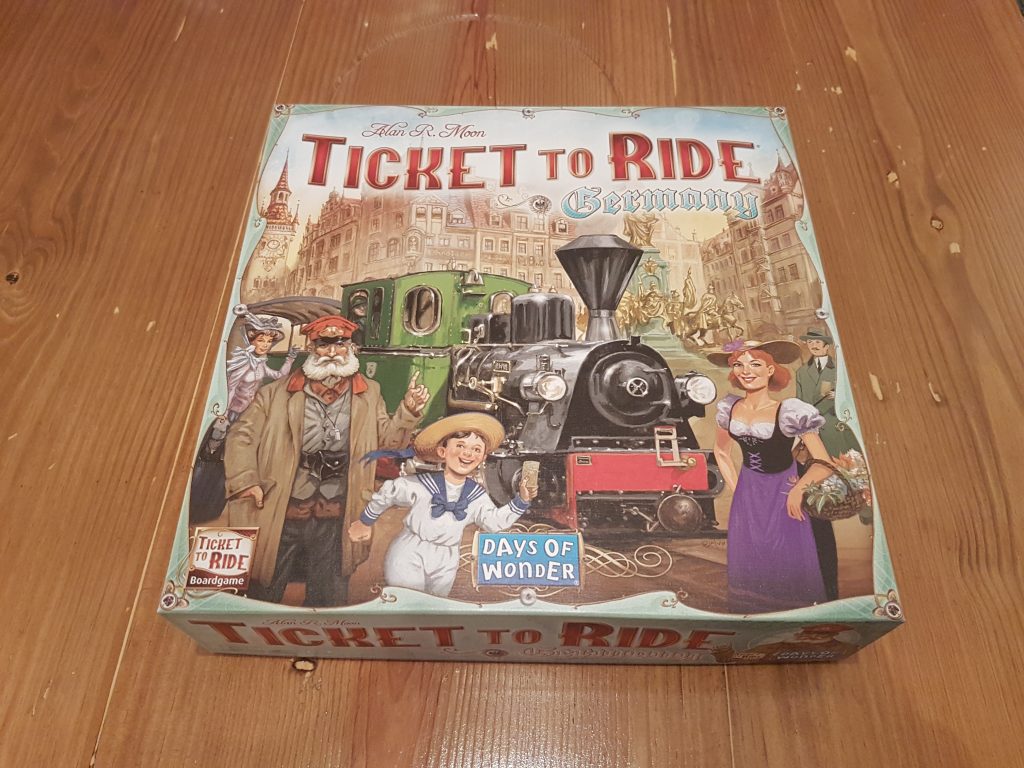


When this occurs, every player then plays one additional turn, after which they each reveal their previously hidden destination tickets. The game ends when one player has only two or fewer of their supply of coloured train pieces. Here the blue player has failed to claim the track between Duluth and Omaha, causing the route in the north to be disconnected and thus incomplete. The key to the game is getting the routes connected. The routes score points by themselves, as mentioned above, but routes not connected to a player's destination do not help them reach the destination or complete their destination ticket. On their turn, a player can claim any route on the board that has not already been claimed, regardless of whether the route helps to complete their destination tickets. Longer routes are worth progressively more points than shorter routes, e.g., a route of length four is worth more than two routes of length two. The same player may not claim both parallel routes between two adjacent cities. Some cities are connected by two parallel routes that can each be claimed by a different player (unless the game is played by three or fewer players, in which case only one of the routes can be claimed). The routes are of varying lengths (requiring varying numbers of matching coloured cards), and only a single player can claim each discrete route marked on the board. play their collected railway car cards from their hand to claim a route on the board and place the corresponding number of train pieces from their store on the claimed route, thereby earning points.draw three additional destination ticket cards and keep at least one (replacing undesired tickets at the bottom of the stack), or.draw two railway car cards in various colours from the draw piles (with the restriction that drawing a wild Locomotive card face up forfeits drawing another card), or.Each player selects a group of 45 colored train pieces with a matching scoring marker.Įach turn, the player has to choose from one of three options:


Once kept, a destination ticket may not be discarded for the rest of the game. The player must keep at least two of these destination cards and discard unwanted tickets, if any, to the bottom of the stack. These become goals, representing two end-points that players secretly attempt to connect. They are also dealt three Destination Ticket cards, each showing a pair of cities on a map of the United States and southern Canada. Gameplay Card colorĪt the beginning of the main game, players are dealt four train car cards as their playing hand. As of October 2014, over three million copies were reported sold, with retail sales of over $150 million. As of August 2008, over 750,000 copies of the game had been sold according to the publisher. Ticket to Ride: Europe won the 2005 International Gamers Award. The game won the 2004 Spiel des Jahres, the Origins Award for Best Board Game of 2004, the 2005 Diana Jones award, the 2005 As d'Or Jeu de l'année, and placed second in the Schweizer Spielepreis for Family Games. Points are earned based on the length of the claimed routes, whoever completes the longest continuous railway, and whether the player can connect distant cities which are determined by drawing ticket cards. Players collect and play train car cards to claim train routes across the map. Localized editions have subsequently been published depicting maps of other countries, cities, and regions. The game's original version is played on a board depicting a railway map of the United States and southern Canada. The game is also known as Zug um Zug (German), Les Aventuriers du Rail (French), Aventureros al Tren (Spanish), Wsiąść do pociągu ( Polish), and Menolippu ( Finnish). It was illustrated by Julien Delval and Cyrille Daujean and published in 2004 by Days of Wonder. Ticket to Ride is a railway-themed German-style board game designed by Alan R. English, French, German, Spanish, Italian, Icelandic, Dutch, Finnish, Polish, Danish, Czech, Swedish, Hungarian, Norwegian, Chinese, Korean, Japanese, Portuguese, Russian, Greek


 0 kommentar(er)
0 kommentar(er)
